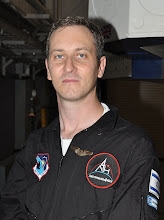 |
| The Westin Hotel, Westminster CO, looking south west (Google Maps) |
What's in a cloud?
The private pilot lesson certifies its holder to fly with visual flight rules (VFR), meaning being able to see outside and use that information to gauge altitude, pitch, etc. However, what if you mistakenly fly into a cloud? One option would be to open the window and tell the cloud it's not supposed to be there. After all, you did verify the weather beforehand and the cloud should at least be considerate of the fact you're not certified for instrument flight rules (IFR). In case that doesn't work, even for the private pilot license some IFR training is in order. Wearing special fogging goggles (Foggles) that block everything apart for the plane instrument panel, I learned how to continuously read and interpret every one of the 6 main instruments and control the plane based on that alone. As an engineer, tuning everything else out and concentrating on flight instruments alone was a great experience that helped me with the rest of the flight, even when I could see the outside again.
A plane with no engine is a glider, not a stone
When a plane (such as the Cessna 172) has one engine, even with preflight inspection and engine reliability features (for example, two spark plugs per cylinder) the engine may shutdown unexpectedly. Thankfully, that's not the end of the world. In addition to steps to remedy the situation, such as turning on carburetor-heat to counteract possible icing, the plane becomes a glider and can be safely landed on a nearby field. Training for engine shutoff was during the second half of the lesson (look for the drop in speed around 22:00 minutes). Another important skill that I am sure I will practice more.
Odds and ends
I flew again with the 180hp Cessna 172N, which is Nevin's favorite plane and as Nevin's student, mine too. I also used my new David Clark H10-13.4 headsets (best price at PilotOne). This was such a great flight I practically smiled all day thinking about it.

 Space Shuttle Launch Poll Results
Space Shuttle Launch Poll Results













No comments:
Post a Comment